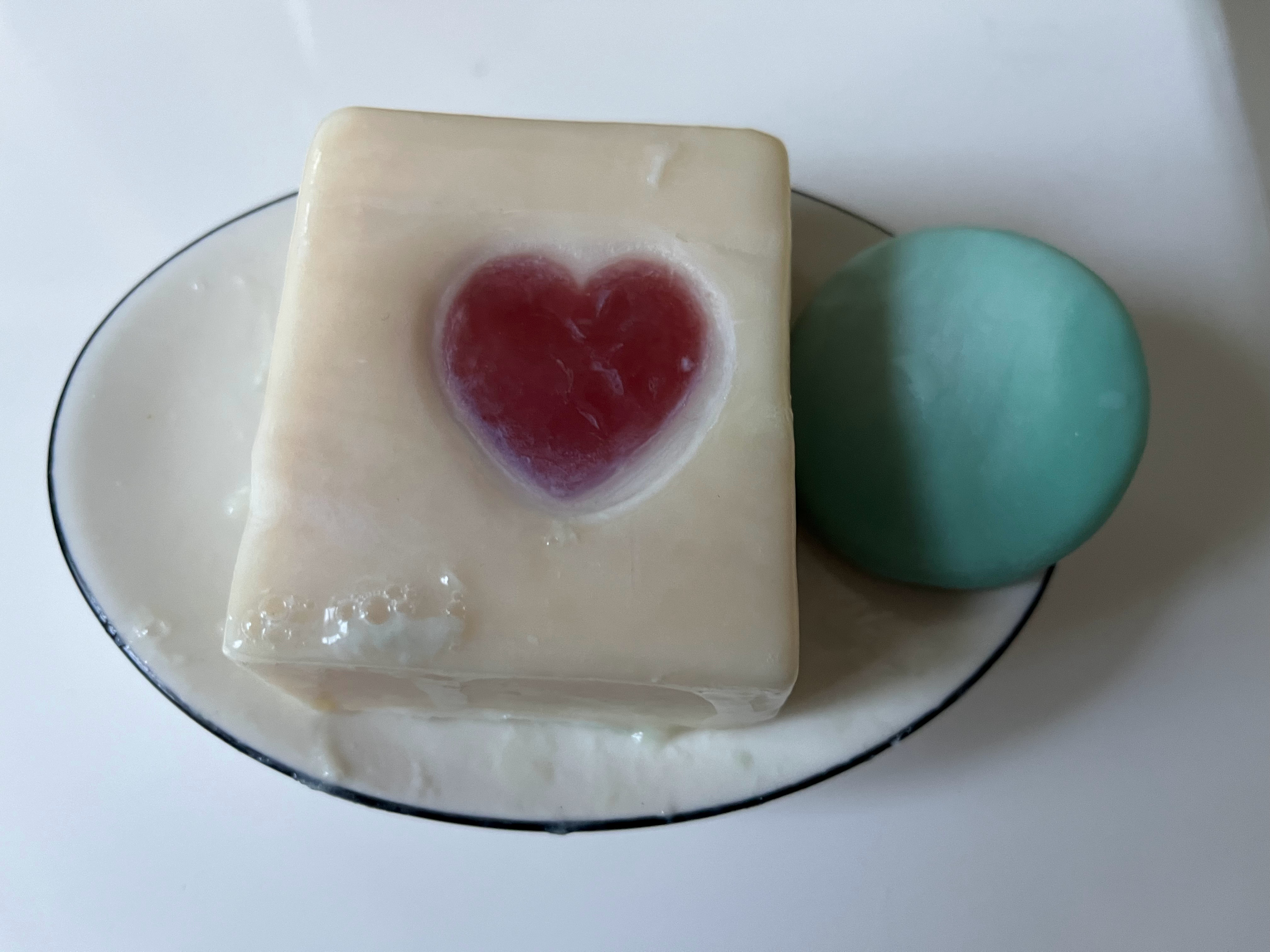Hearts and Soap
She wants to paint a pumpkin so that it matches the colorful white ghost costume she plans to wear for Halloween. At three, she doesn’t know that white and colorful are mutually exclusive. I can only imagine what she thinks Halloween is all about. But none of that is important. All that matters is our time together as we paint a papier-mâché pumpkin in whatever colors she chooses.
We begin with orange, of course, as close as we can come to pumpkin. The idea of washing brushes between colors is a concept not yet understood. Each idea gives rise to the next. We decide that painting our hands is just as important as decorating our pumpkin. This goes along with being colorful white ghosts. Pretty soon, the colors merge. That mixing red and blue results in purple is a subject of unending fascination, but only one color emerges when all the paints are combined. We brush it on our fingers and smoosh it all over our hands and wrists. Then we laugh with delight as we daub the mud on our noses and chins.
Finally, we’ve had enough. We make our way to the stair-stool in the bathroom to wash hands. She rips off her painting apron. In the process, she gets paint on her shirt and in her hair. I stand behind her, little fingers in mine. Gently, I wash away the thick paint, thankful that it’s water-based and not the oils I use on my canvases. We laugh as water splashes everywhere. Mommy and Daddy will have to clean up after us.
“Time for soap, Papa,” she says. There are a variety of soaps, perhaps reflecting Mommy’s lifelong wish to be all things to all people. But that’s a subject for another blog that will be postponed until permission is granted.
She points to a small, lavender-scented oval on the dish. It’s green—her favorite color. “I’m going to use this one,” she says. She points to the white rectangle with a red heart embedded at its center. “You use this one, Papa.”
“Why do you want me to use that one?” I ask.
She looks up at me in the mirror, hands upraised in a gesture that conveys astonishment at my lack of understanding.
“Because I know you love me,” she says with certainty.
“I do love you,” I whisper, barely able to get the words out. I focus on the suds, rinse pigment from her hands, reveal the purity of what lies beneath. I follow it up with a list of all the other people who love her, too.
What a fortunate child, I think. And what a fortunate grandfather. Do her words come from the heart, or is she repeating what she hears her parents say? Does it matter?
I am struck by a sudden realization, both new and as old as the hills. We learn and relearn it as the passage of time gnarls our bark, wizens our trunk, softens our center, and shapes our grain into hardwood patterns as intricate as life itself.
Love and connection are not the same. We love our children, young and old, with love unconditional. But our connection to them changes. The fabric from which we are woven rips as they differentiate themselves from us. The tearing is a natural process. It continues as they harden into their own wondrous and intricate patterns.
But, for now, there is a brief moment when everything can be spoken—when self-involvement is indistinguishable from innocence.
What wonders we are.
![]()

